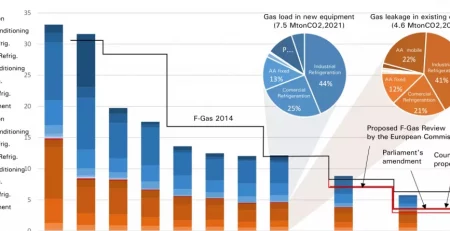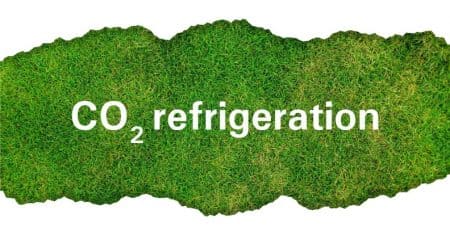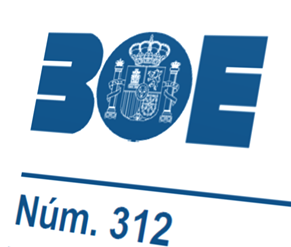Types of refrigerant gases that are most commonly used for refrigeration
INTARCON2022-06-03T09:10:13+02:00The time has come! The European F-Gas regulation prohibited the use of HFC refrigerant gases containing PCA ≥ 2500 in new installations on 1 January 2020. Moreover, refrigerants containing GWP ≥ 150 will be prohibited from 2022 onwards; this has revolutionised the industrial refrigeration sector, forcing it to use alternative refrigerants.
Below are the most commonly used refrigerant gases in commercial and industrial applications nowadays, classified by sector and units in which they are used, applicable regulations, whether they are harmful to the ozone layer or not and whether they mitigate the greenhouse effect or not.
What refrigerant gases have been used in refrigeration applications until now?
Over the past few decades, R404A has been the refrigerant par excellence in commercial and industrial refrigeration applications, due to its properties, making it the perfect refrigerant for low, medium and even high-temperature applications. After the entry into force of the fluorinated gas tax in Spain and with the threats of the imminent prohibition of using R404A refrigerant in 2020 by the European F-Gas regulation, the different gas manufacturers and distributors have launched direct replacements of R404A.
Moreover, the use of HFC gases (hydrofluorocarbons) was implemented in the world of refrigeration during the 90s to replace other gases that were harmful to the ozone layer (CFC or HCFC). Currently, these are also in the process of being replaced, since they these have the biggest negative impact on the greenhouse effect and, therefore, have a major impact on global warming.
What are the latest trends in this regard?
Over the past few years, the atmospheric emissions of HFCs have increased due to the growing demand of refrigeration services, in particular, in developing countries with fast growing middle classes and warmer climates.
Most commonly used refrigerant gases nowadays
The most commonly used refrigerants nowadays have an ozone depletion potential equal to zero (ODP = 0). Therefore, none of them are potentially harmful to the ozone layer; these are the replacement refrigerant gases. In turn, the global warming potential (GWP 100) changes a lot from one refrigerant to another.
 What are the applicable regulations?
What are the applicable regulations?
- Royal Decree 138/2011, dated 4 February, which approves the Safety regulations for refrigeration installations and their complementary technical instructions.
- Royal Decree 1042/2013, dated 27 December, which passes the Fluorinated greenhouse gases tax regulation.
- Law 6/2018, dated 3 July, on the 2018 National Budget. Article 85 (amendment of the previous regulation).
- Regulation (EU) no. 517/2014 of the European Parliament and of the Council, dated 16 April 2014, on fluorinated greenhouse gases. “F-gas Regulation”.
- Royal Decree 115/2017, dated 17 February. Regulating the marketing and handling of fluorinated gases and equipment based on them, as well as the certification of the professionals who use them and laying down the technical requirements for installations that develop activities that emit fluorinated gases.
Our goal
INTARCON’s solutions are currently based on the use of natural low-GWP refrigerants, such as propane (R290), used in its commercial units and chillers; CO2 (R744) in direct expansion commercial refrigeration stations, and R152a for high-efficiency glycol refrigeration plants, without forgetting the interesting combination of R744 and R290, used in commercial refrigeration plants for regions with warmer climates. Likewise, INTARCON is developing indirect high-efficiency systems with ammonia (R717).

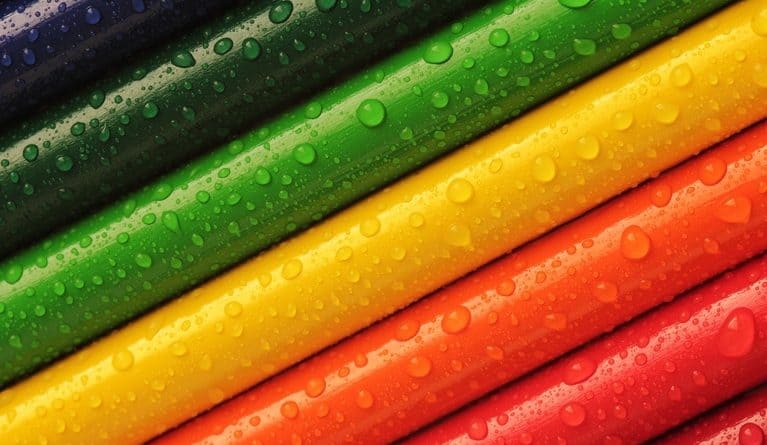
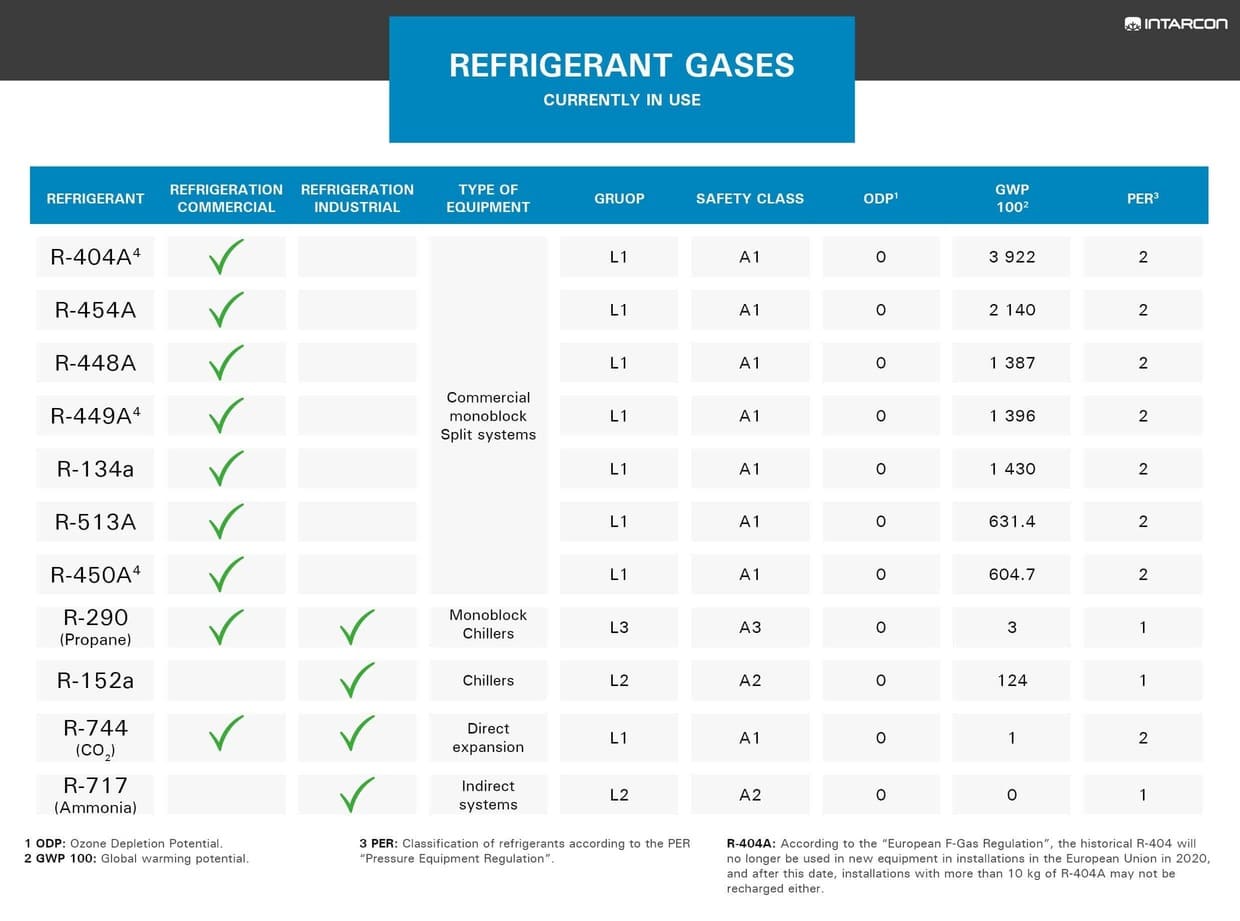 What are the applicable regulations?
What are the applicable regulations?
